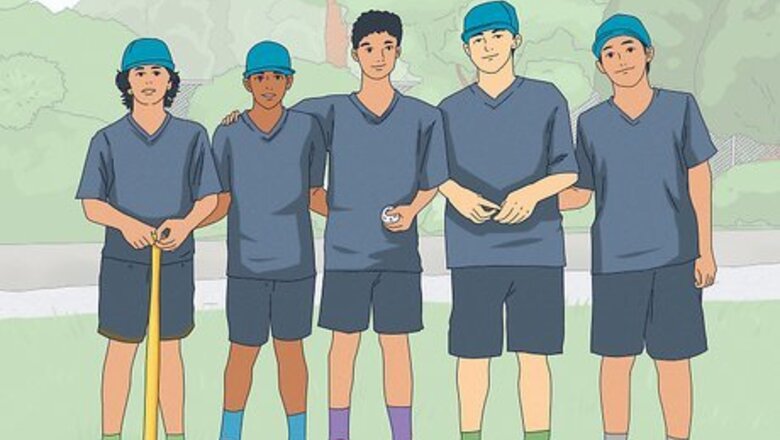
views
- Number of players: 2 teams of 4-5 players each.
- Object of the game: Hit the ball to score as many runs as possible, while avoiding getting “out.”
- Game structure: Wiffle Ball is commonly played in 5 innings. Teams take turns batting and pitching during each inning.
Organizing Teams & Equipment

Form 2 teams of 4-5 players each. This is the sweet spot for Wiffle Ball, and ensures that everyone gets plenty of chances to bat or play the field, without sitting on the bench too long. That said, feel free to have up to 8-10 players to a team, if you have many players, or consider splitting them into smaller teams playing tournament-style.
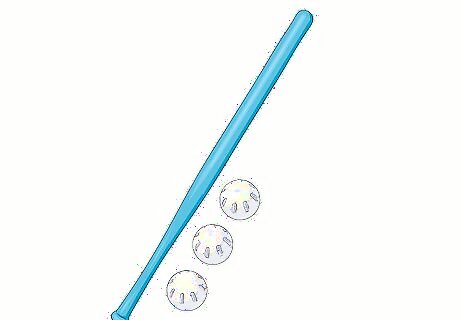
Gather a few plastic bats and Wiffle balls. Aim to have at least 4-5 Wiffle balls and 2 bats, to be safe. It’s not Wiffle Ball without the signature plastic equipment! Make sure you’re only using plastic bats to swing at the plastic ball; otherwise you may dent or damage it. Wiffle Ball doesn’t use gloves or mitts.

Mark 4 bases in a large square, with a pitcher’s mound. Lay your home base on the ground. Lay the 3 other bases in a square pattern so that each base is 45 ft (14 m) away from the last. Finally, establish a pitcher’s mound in chalk or with a small rope 45 ft (14 m) away from home base, at the center of the square. If you don’t have proper bases, use cones, or even random objects like large rocks.
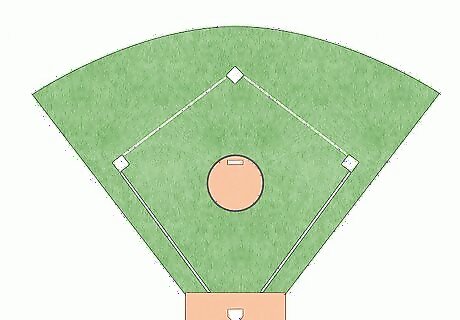
Mark “run” zones starting 45 ft (14 m) from home base. Use gym cones, lawn flags, or other objects to create a quarter-circle 45 ft (14 m) from home base. Any ball that lands in this area counts as a single run. Make another arc 45 ft (14 m) from the first, and another 45 ft (14 m) from that one. These are the double- and triple-run zones. Make a final arc 95 ft (29 m) away from home. This is the home run boundary. Some versions of Wiffle Ball use standard baseball rules, with no zones and just a home run boundary. If you’re just playing a pickup game, feel free to alter the dimensions as you see fit, or just eyeball it. Wiffle Ball is more about fun, and the rules are just there to help you have fun.

Set up a strike zone target behind home base. A strike zone target is a rectangle often made of PVC and fabric that stands upright behind home base. During the game, pitchers must throw the ball so that it would hit the target if the batter doesn’t hit it. If the pitch misses the box, it’s not counted. Strike zone boxes are often about 22 in (56 cm) wide by 32 in (81 cm) tall, and stand 18 in (46 cm) off the ground. If you don’t have a strike zone box, ask someone to be an umpire and roughly judge whether a pitch is legal. Or, either let the batter call it and trust their judgment, or play without this aspect altogether.
Game Structure
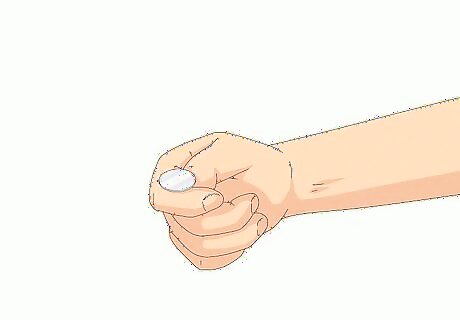
Flip a coin to see which team bats first. Each inning, both teams have a chance to bat and score points, as well to pitch. Flip a coin to see which team has a chance to score points first.
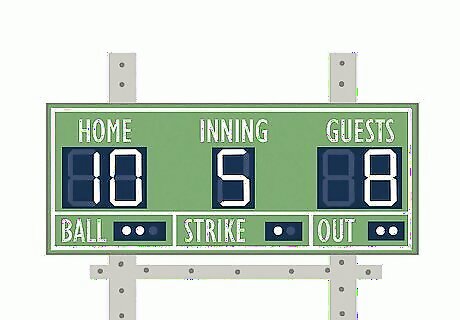
Play 5 innings, where each team has a turn to bat. An “inning” is a round of Wiffle Ball. The team who won the coin toss bats first (offense), and the other team pitches and plays the field (defense). When a team acquires 3 “outs” while batting, the teams switch sides. When the second team at-bat also acquires 3 outs, the inning is over, and a new inning begins with the first team at bat again.
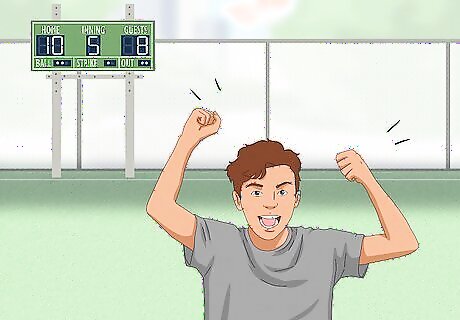
Win the game by having the most runs at the end of 5 innings. Once both teams have had 5 chances to bat and score points, the game ends. The team with the most “runs” (or points) after the fifth inning wins the game. Some Wiffle Ball leagues play for 5 innings or for 50 minutes, whichever comes first.
Offensive Play (Batting)
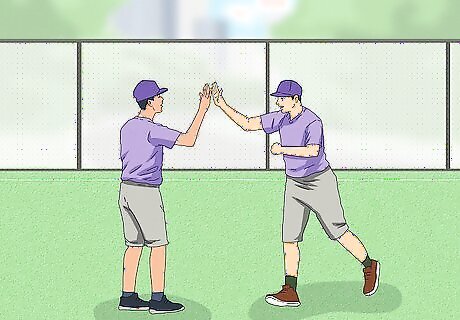
Choose the order in which your team will bat. During a game of Wiffle Ball, teams take turns sending their players to bat. To make sure every player gets a turn, establish an order in which the players on your team will bat. You’ll cycle through this order throughout the game. Ask for volunteers, or assign the order arbitrarily. In some games, if a team bats out of order, they receive an “out,” or a penalty.
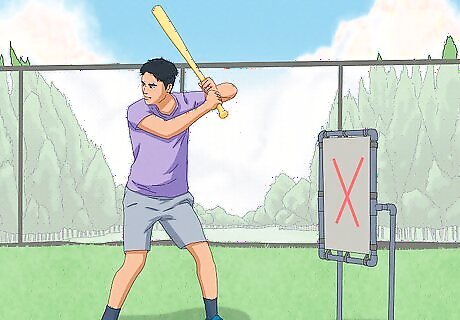
Send a player to bat. The team that’s at-bat, or playing the offensive side, sends their first player to home base to bat. This player stands to the right or left of home base, depending on their grip, and prepares to hit the ball when the pitcher throws it.

Run counterclockwise around the bases according to where you hit the ball. When a player successfully hits a pitch, they run around the bases according to where the ball lands. If it lands in the single-run zone, they run to first base. If it lands in the double-run zone, they run to second, and to third for the triple-zone. Hitting across the home run boundary means you run all the way around and score a point. If there are already players on the bases, those players also move ahead 1, 2, or 3 bases, depending on where the ball lands. Hitting the ball to the right of first base or left of third base is a “foul” and doesn’t count. One-handed batting and bunting, or holding the bat still to hit the ball a very short distance, are not allowed in most Wiffle Ball Games.
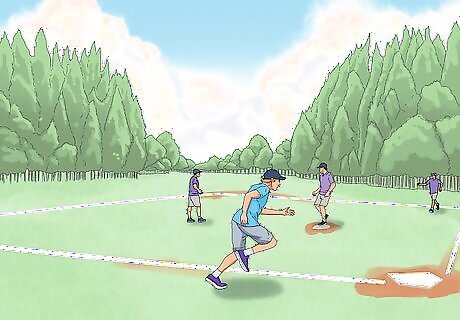
Run all the way to home base to score a run. If you make it around first, second, and third bases and run back to home, your team scores a “run,” or a point. Take a seat and cheer on your teammates as your team tries to score as many runs as you can while at-bat. Designate a player from each team to keep score for both teams, to make it fair.
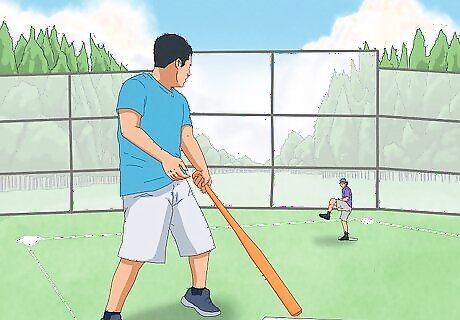
Let the next player bat if you strike out. If you swing and miss the ball 3 times, you’ve struck out. Your team acquires an “out” and the next player from your team goes to bat. Continue batting and running until your team acquires 3 outs. Then it’s time to switch places with the pitching team. If the batter hits the ball into the air and the defending team catches it before it hits the ground, that also counts as an out. If a player hits a ball to the ground and the defending team retrieves it before it rolls across the single-run boundary, that also counts as an out.
Defensive Play (Pitching)
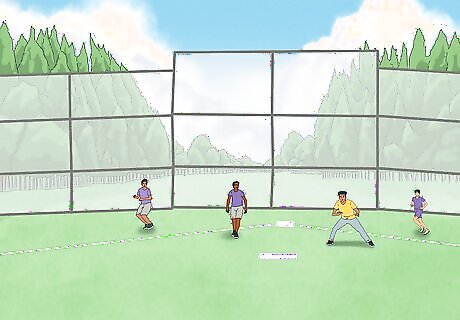
Send 4 players from the pitching team onto the field. The team that pitches first sends 4 players onto the field: a pitcher, 2 fielders, and a catcher. The pitcher stands on the pitcher’s mound, the fielders stand near first and third base, and the catcher squats behind home base, ready to catch the pitch. A single player can pitch for their team the entire game, or players can take turns pitching.
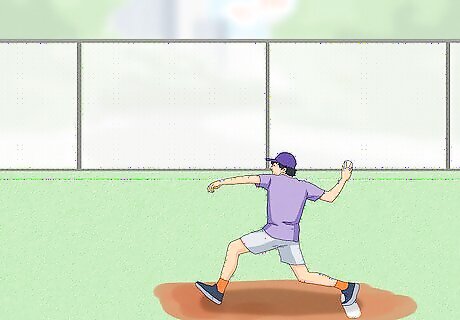
Pitch the ball and prepare to retrieve it. Wiffle Ball is like playing baseball: the pitcher pitches the ball to the batter, who tries to swing and hit the ball. Once the batter does hit it, the defensive team rushes to catch or retrieve the ball. Each pitch must have at least a slight arc to be considered “legal,” otherwise it’s a “ball.” “Balls” also occur if the pitch hits the body of the batter, or lands outside the strike zone. Five balls and the batter gets to walk to first base. Also, the pitcher’s foot must be touching the pitcher’s mound when they release the ball from their hand, or the pitch is counted as a ball.
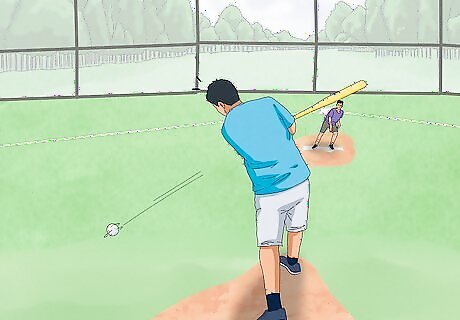
Give the offensive team 3 outs to switch sides. There are 3 ways to give the offensive team an “out” in Wiffle Ball: If the batter swings and misses a pitch, it counts as a “strike.” Three strikes per batter count as an “out.” Catch a ball before it hits the ground (even in the “foul” areas). Retrieve a ground ball before it rolls past the single-run boundary.
Other Common Rules
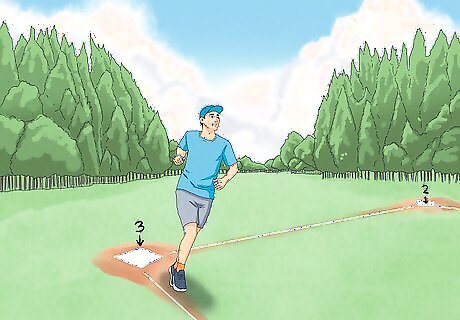
Call a “tag” to let a runner on third base score. This is a special rule in many games of Wiffle Ball. When the offensive team has a runner on third and 2 or fewer outs, the batter can call “Tag!” immediately after they hit the ball, while it’s still in the air. The runner on third then gets to walk to home, scoring a point. If the defensive team catches the ball, the player who caught it then has the opportunity to stand in place and immediately throw it at the backstop. If it hits the backstop (even after hitting the ground), it counts as an out and no points are scored.
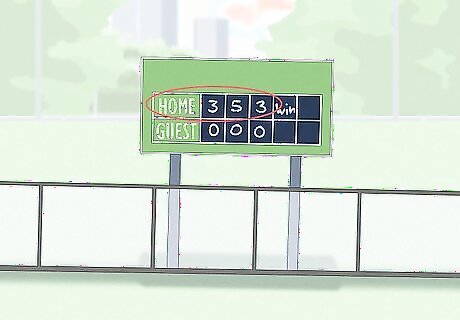
Establish a mercy rule to let unevenly matched teams end the game. Many leagues play with a mercy rule where, after 3 complete innings, if a team is leading the other by at least 15 runs, the game ends immediately and the team in the lead wins. This keeps games short and fun for the team that might not have the skill to match the other team. This is usually only used in competitive games. If you’re just playing for fun, keep playing as long as you’re having fun!

Play with baseball rules for a more intense game. In this version, rather than move bases according to where the ball lands, runners sprint around the bases after they hit the ball, and can stop running at whichever base they choose. But if the other team gets the ball and “tags” them with it, they’re out. In this version, any runner not standing on a base is at risk of being tagged. The defensive team can even throw the ball at a runner to tag them. Runners can also “steal” bases, or advance a base before a pitch while risking being tagged.
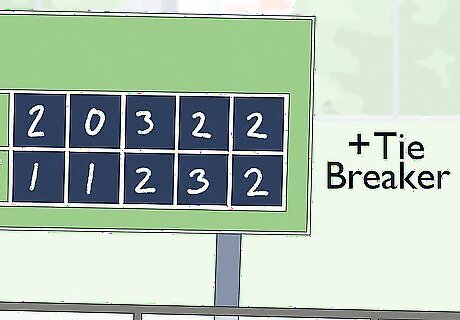
Play an extra inning to break a tie. If both teams have the same number of runs after 5 full innings, play another full inning, giving both teams a chance to bat. Keep playing extra innings until one team has more points than the other after a full extra inning. Also, both teams start their at-bat with the bases loaded, or a runner on each base.










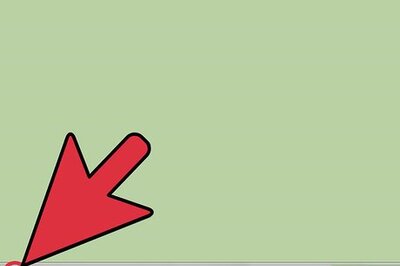



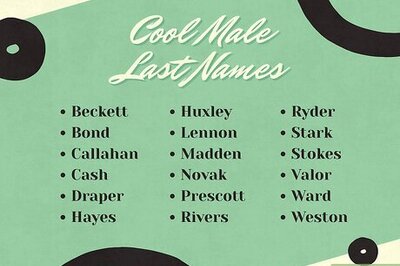



Comments
0 comment